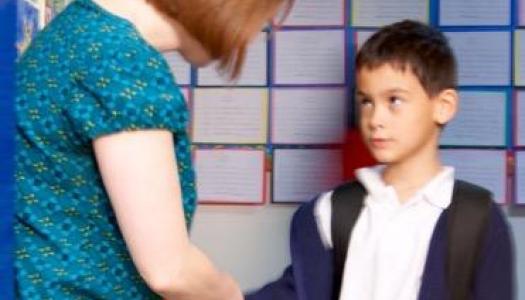Analyzing and Adjusting for Behavioral Success, Part 2
Join Our Community
Access this resource now. Get up to three resources every month for free.
Choose from thousands of articles, lessons, guides, videos, and printables.
In last week's first installment of the article on analyzing and adjusting our work with students to set them for success, we focused on working with the classroom environment. This week's installment analyzes choices.
 Available Choices
Available Choices
When we think about available choices, we consider the types of things we make available for students to choose from. This is what we are looking for:
a. Reading materials: Children must have access to an abundant variety of reading materials, whether in the classroom or the school library, so they can find books that they are interested in and are also a good fit.
b. Is time to shop for books built into the day and week?
c. Writing topics: Are we allowing students to choose what to write about?
d. Math Daily 3: Are the games and activities available fresh, interesting, and appropriate for meeting all student needs?
e. Seating options: Is there enough variety of places for students to choose from that can meet their physical needs?
Student Choices
When observing student choices, we focus on the decisions children are in charge of making for themselves:
a. Read to Self:
· Are children choosing books that are a good fit? Books that are too hard or not of interest lead to lack of engagement, often resulting in less-than-desirable behaviors.
· Do students know how to find a book they want to read, that is a good fit, and one they can engage with?
b. Read to Someone:
· Are students choosing good partners?
· Are both partners participating in their job, which fosters engagement (i.e., one reads, the other checks for understanding)?
· Are partners sitting EEKK and using soft voices?
· Are the students who are choosing Read to Someone those who really need it?
c. Work on Writing:
· Are students able to face the blank page?
· Are they able to find a topic to write about?
· Do they know how to manage their materials?
d. Word Work:
· Are students participating in Word Work for 10 minutes and then moving into Work on Writing?
· Do they know the words they are working on?
e. Listen to Reading: Do students know how to run the tool being used?
f. Math by Myself: Are students choosing a math game or activity that is a good fit and that they can engage with? Do they know how to play the game or do the activity independently?
g. Math with Someone: Are they choosing successful partners? Is the game or activity appropriate for both? Do they know how to play the game or activity?







